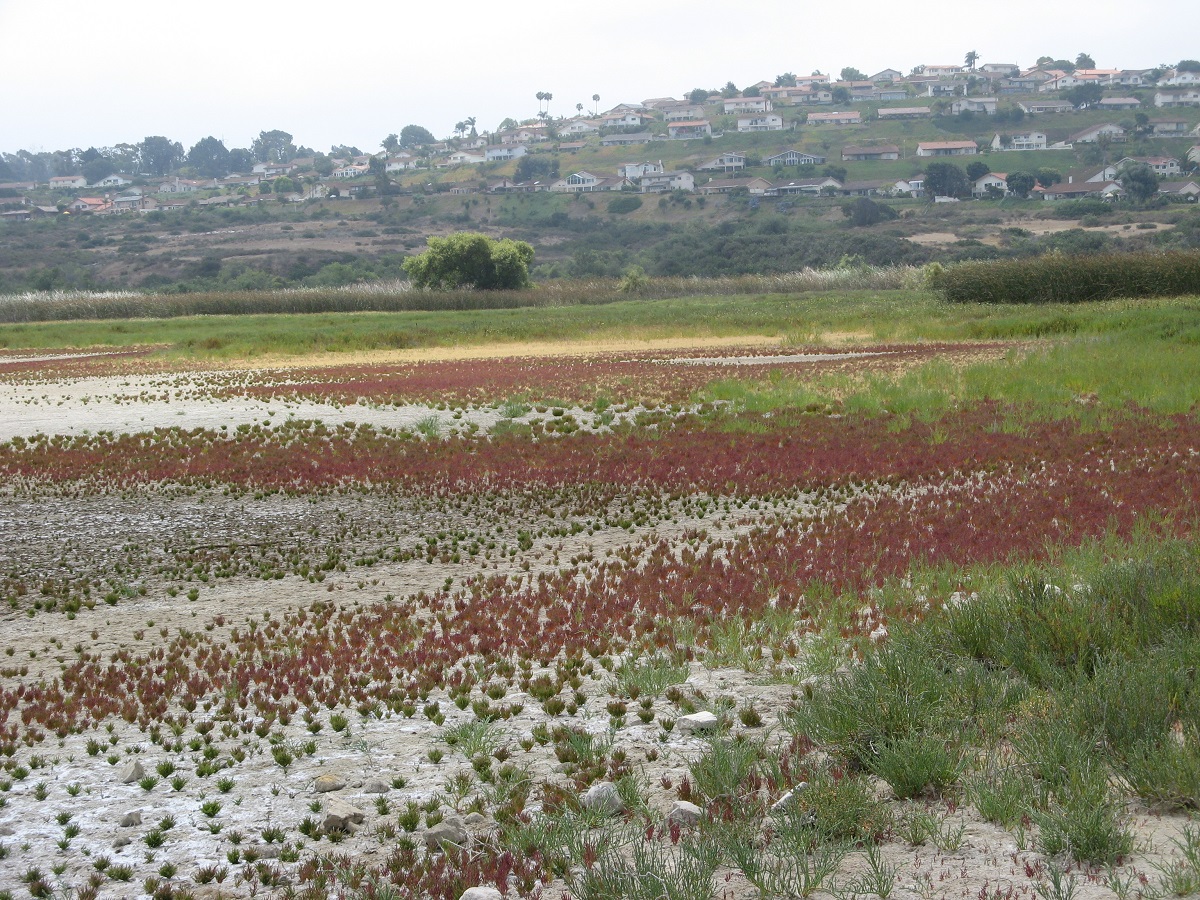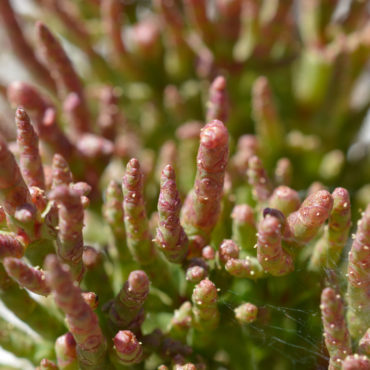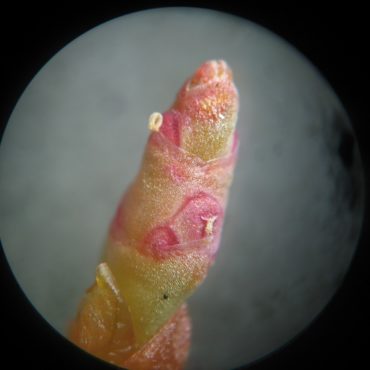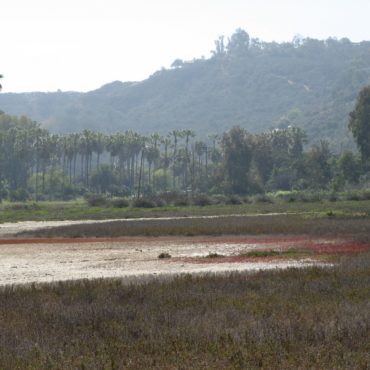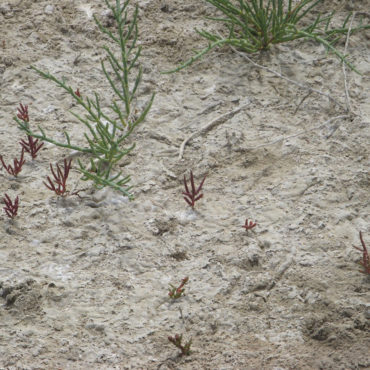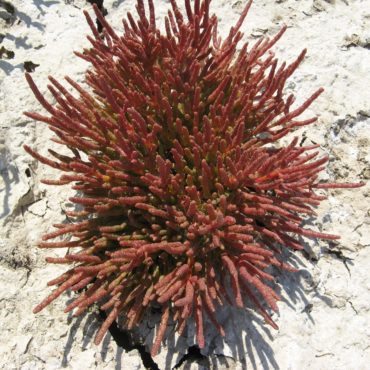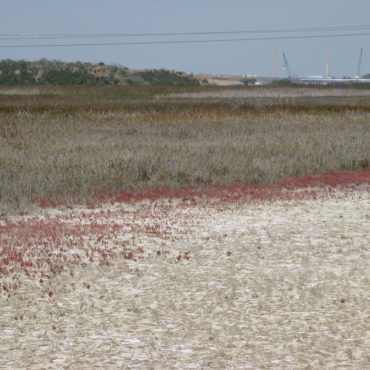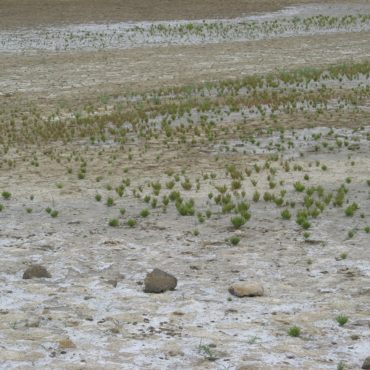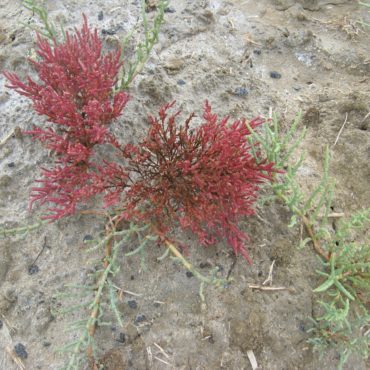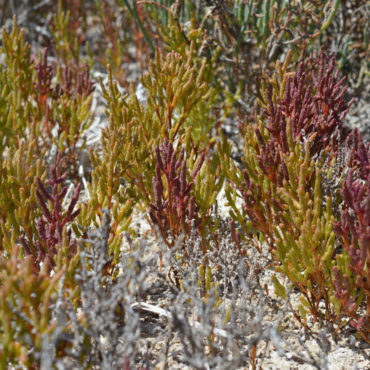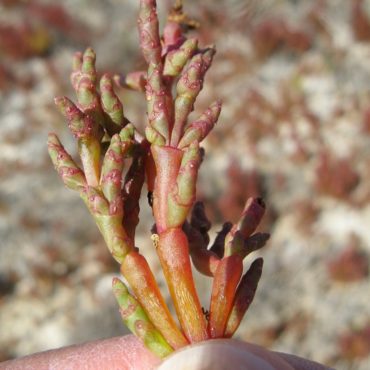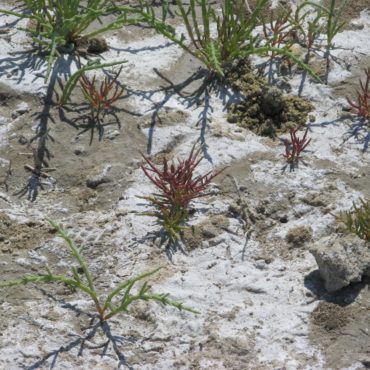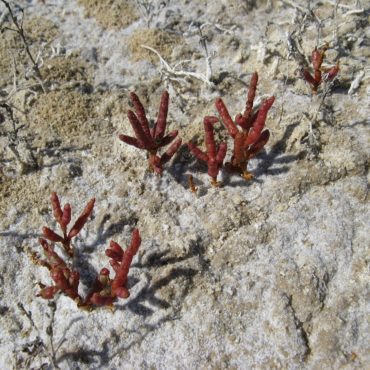Classification
Slender glasswort is a dicot angiosperm in the goosefoot family, Chenopodiaceae.2 Plants in this family are often succulent or scaley; many appear weedy; many are salt tolerant. Typical flowers are tiny, greenish and lack petals.11,34,44,310 The goosefoot family includes well-known edible species such as chard, beets and spinach, as well as the invasive tumbleweed (Salsola tragus), accidentally introduced as a contaminant in flax seed about 1870.41
Glasswort is one common name for several similar species of low-growing succulent salt-tolerant plants, often called pickleweed. There are two other species of “pickleweed” reported from the Reserve: common pickleweed, S. pacifica, and a somewhat shrubbier species, Parish’s glasswort, Arthrocnemum subterminalis.48 Slender glasswort is distinguished by its smaller size, annual life cycle, early fall color and by the triangular arrangement of the tiny flowers.
A recent phylogenetic study and partial revision of the genus was given the pithy title “A Taxonomic Nightmare Comes True”.413 Slender glasswort was previously considered part of a world-wide species, S. europeae. In the recent treatment, the annual species in North America was separated from the European species, and given the name S. depressa. There is some reason to think that the S. depressa of North America is still a complex of species that needs further study. Specifically, the Atlantic population seems “quite distinct” from that along the Pacific.306 This may explain some apparently contradictory descriptions found in the present literature.
Jepson eFlora Taxon Page

